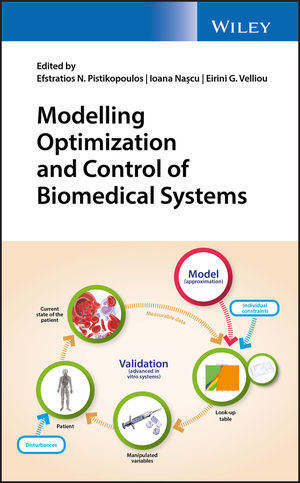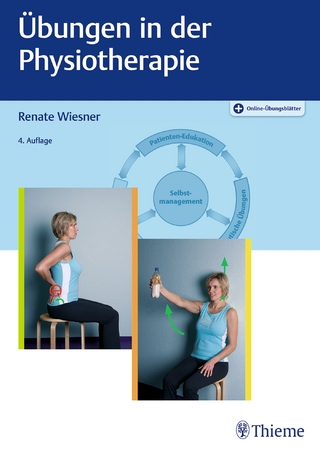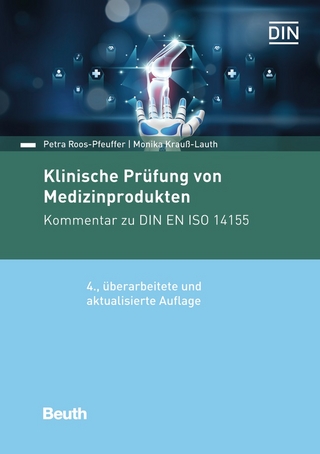
Modelling Optimization and Control of Biomedical Systems
John Wiley & Sons Inc (Verlag)
978-1-118-96559-7 (ISBN)
This book is based on the Modelling, Control and Optimization of Biomedical Systems (MOBILE) project, which was created to derive intelligent computer model-based systems for optimization of biomedical drug delivery systems in the cases of diabetes, anaesthesia, and blood cancer. These systems can ensure reliable and fast calculation of the optimal drug dosage without the need for an online computer—while taking into account the specifics and constraints of the patient model, flexibility to adapt to changing patient characteristics and incorporation of the physician’s performance criteria, and maintaining the safety of the patients.
Modelling Optimization and Control of Biomedical Systems covers: mathematical modelling of drug delivery systems; model analysis, parameter estimation, and approximation; optimization and control; sensitivity analysis & model reduction; multi-parametric programming and model predictive control; estimation techniques; physiologically-based patient model; control design for volatile anaesthesia; multiparametric model based approach to intravenous anaesthesia; hybrid model predictive control strategies; Type I Diabetes Mellitus; in vitro and in silico block of the integrated platform for the study of leukaemia; chemotherapy treatment as a process systems application; and more.
Introduces readers to the Modelling, Control and Optimization of Biomedical Systems (MOBILE) project
Presents in detail the theoretical background, computational tools, and methods that are used in all the different biomedical systems
Teaches the theory for multi-parametric mixed-integer programming and explicit optimal control of volatile anaesthesia
Provides an overview of the framework for modelling, optimization, and control of biomedical systems
This book will appeal to students, researchers, and scientists working on the modelling, control, and optimization of biomedical systems and to those involved in cancer treatment, anaesthsia, and drug delivery systems.
Efstratios N. Pistikopoulos, PhD, is the Interim Co-Director and Deputy Director of the Texas A&M Energy Institute, as well as a TEES Distinguished Research Professor in the Artie McFerrin Department of Chemical Engineering at Texas A&M University. Professor Pistikopoulos received the Computing in Chemical Engineering Award from the American Institute of Chemical Engineers (AIChE) in 2012 and was elected Fellow of the Royal Academy of Engineering in the UK in 2013. Ioana Nașcu, PhD, MEng, is a Postdoctoral Research Associate at Artie McFerrin Department of Chemical Engineering, Texas A&M University. Her research focuses on developing advanced multi-parametric optimization and control strategies for biomedical processes. Eirini G. Velliou, PhD, MEng, FHEA, is Principal Investigator and founder of the Bioprocess and Biochemical Engineering Group (BioProChem) at the Department of Chemical and Process Engineering of the University of Surrey. Her research focus includes cancer tissue engineering and environmental (cancer cell) stress response.
List of Contributors xiii
Preface xv
Part I 1
1 Framework and Tools: A Framework for Modelling, Optimization and Control of Biomedical Systems 3
Eirini G. Velliou, Ioana Naşcu, Stamatina Zavitsanou, Eleni Pefani, Alexandra Krieger, Michael C. Georgiadis, and Efstratios N. Pistikopoulos
1.1 Mathematical Modelling of Drug Delivery Systems 3
1.1.1 Pharmacokinetic Modelling 3
1.1.1.1 Compartmental Models 3
1.1.1.2 Physiologically Based Pharmacokinetic Models 5
1.1.2 Pharmacodynamic Modelling 5
1.2 Model analysis, Parameter Estimation and Approximation 7
1.2.1 Global Sensitivity Analysis 8
1.2.2 Variability Analysis 8
1.2.3 Parameter Estimation and Correlation 9
1.3 Optimization and Control 9
References 11
2 Draft Computational Tools and Methods 13
Ioana Naşcu, Richard Oberdieck, Romain Lambert, Pedro Rivotti, and Efstratios N. Pistikopoulos
2.1 Introduction 13
2.2 Sensitivity Analysis and Model Reduction 14
2.2.1 Sensitivity Analysis 14
2.2.1.1 Sobol’s Sensitivity Analysis 16
2.2.1.2 High‐Dimensional Model Representation 17
2.2.1.3 Group Method of Data Handling 18
2.2.1.4 GMDH–HDMR 19
2.2.2 Model Reduction 20
2.2.2.1 Linear Model Order Reduction 21
2.2.2.2 Nonlinear Model Reduction 22
2.3 Multiparametric Programming and Model Predictive Control 24
2.3.1 Dynamic Programming and Robust Control 28
2.4 Estimation Techniques 33
2.4.1 Kalman Filter 34
2.4.1.1 Time Update (Prediction Step) 34
2.4.1.2 Measurement Update (Correction Step) 34
2.4.2 Moving Horizon Estimation 34
2.5 Explicit Hybrid Control 39
2.5.1 Multiparametric Mixed‐Integer Programming 40
2.5.1.1 Problem and Solution Characterization 40
2.5.1.2 Literature Review 42
2.5.1.3 A General Framework for the Solution of mp‐MIQP Problems 48
2.5.1.4 Detailed Analysis of the General Framework 50
2.5.1.5 Description of an Exact Comparison Procedure 54
References 57
3 Volatile Anaesthesia 67
Alexandra Krieger, Ioana Naşcu, Nicki Panoskaltsis, Athanasios Mantalaris, Michael C. Georgiadis, and Efstratios N. Pistikopoulos
3.1 Introduction 67
3.2 Physiologically Based Patient Model 69
3.2.1 Pharmacokinetics 69
3.2.1.1 Body Compartments 72
3.2.1.2 Blood Volume 73
3.2.1.3 Cardiac Output 73
3.2.1.4 Lung Volume 74
3.2.2 Pharmacodynamics 74
3.2.3 Individualized Patient Variables and Parameters 74
3.3 Model Analysis 75
3.3.1 Uncertainty Identification via Patient Variability Analysis 75
3.3.2 Global Sensitivity Analysis 77
3.3.3 Correlation Analysis and Parameter Estimation 81
3.3.4 Simulation Results 83
3.4 Control Design for Volatile Anaesthesia 86
3.4.1 State Estimation 87
3.4.1.1 Model Linearization 88
3.4.2 On‐Line Parameter Estimation 90
3.4.2.1 Control and Algorithm Design 91
3.4.2.2 Testing of the On‐Line Estimation Algorithm 93
3.4.3 Case Study: Controller Testing for Isourane‐Based Anaesthesia 96
Conclusions 98
Appendix 99
References 100
4 Intravenous Anaesthesia 103
Ioana Naşcu, Alexandra Krieger, Romain Lambert, and Efstratios N. Pistikopoulos
4.1 A Multiparametric Model‐based Approach to Intravenous Anaesthesia 103
4.1.1 Introduction 103
4.1.2 Patient Model 104
4.1.3 Sensitivity Analysis 108
4.1.4 Advanced Model‐based Control Strategies 110
4.1.4.1 Extended Predictive Self‐adaptive Control (EPSAC) Strategy 111
4.1.4.2 Multiparametric Strategy 111
4.1.5 Control Design 112
4.1.5.1 Case 1: EPSAC 115
4.1.5.2 Case 2: mp‐MPC Without Nonlinearity Compensation 116
4.1.5.3 Case 3: mp‐MPC With Nonlinear Compensation 117
4.1.5.4 Case 4: mp‐MPC With Nonlinearity Compensation and Estimation 118
4.1.6 Results 118
4.1.6.1 Induction Phase 119
4.1.6.2 Maintenance Phase 123
4.1.6.3 Discussion 125
4.2 Simultaneous Estimation and Advanced Control 130
4.2.1 Introduction 130
4.2.2 Multiparametric Moving Horizon Estimation (mp‐MHE) 130
4.2.3 Simultaneous Estimation and mp‐MPC Strategy 132
4.2.4 Results 134
4.2.4.1 Induction Phase 135
4.2.4.2 Maintenance Phase 138
4.3 Hybrid Model Predictive Control Strategies 142
4.3.1 Introduction 142
4.3.2 Hybrid Patient Model Formulation 143
4.3.3 Control Design 144
4.3.3.1 Hybrid Formulation of the Control Problem: Intravenous Anaesthesia 144
4.3.3.2 Robust Hybrid mp‐MPC Control Strategy: Offset Free 146
4.3.3.3 Control Scheme 147
4.3.4 Results 147
4.3.4.1 No Offset Correction 147
4.3.4.2 Offset Free 150
4.3.5 Discussion 150
4.4 Conclusions 153
References 153
Part II 157
5 Part A: Type 1 Diabetes Mellitus: Modelling, Model Analysis and Optimization 159
Stamatina Zavitsanou, Athanasios Mantalaris, Michael C. Georgiadis, and Efstratios N. Pistikopoulos
5.a Type 1 Diabetes Mellitus: Modelling, Model Analysis and Optimization 159
5.a.1 Introduction: Type 1 Diabetes Mellitus 159
5.a.1.1 The Concept of the Artificial Pancreas 160
5.a.2 Modelling the Glucoregulatory System 162
5.a.3 Physiologically Based Compartmental Model 162
5.a.3.1 Endogenous Glucose Production (EGP) 167
5.a.3.2 Rate of Glucose Appearance (Ra) 168
5.a.3.3 Glucose Renal Excretion (Excretion) 168
5.a.3.4 Glucose Diffusion in the Periphery 168
5.a.3.5 Adaptation to the Individual Patient 169
5.a.3.5.1 Total Blood Volume 169
5.a.3.5.2 Cardiac Output 170
5.a.3.5.3 Compartmental Volume 170
5.a.3.5.4 Peripheral Interstitial Volume 171
5.a.3.6 Insulin Kinetics 171
5.a.4 Model Analysis 172
5.a.4.1 Insulin Kinetics Model Selection 172
5.a.4.2 Endogenous Glucose Production: Parameter Estimation 176
5.a.4.3 Global Sensitivity Analysis 177
5.a.4.3.1 Individual Model Parameters 178
5.a.4.4 Parameter Estimation 182
5.a.5 Simulation Results 183
5.a.6 Dynamic Optimization 185
5.a.6.1 Time Delays in the System 185
5.a.6.2 Dynamic Optimization of Insulin Delivery 188
5.a.6.3 Alternative Insulin Infusion 189
5.a.6.4 Concluding Remarks 192
Part B: Type 1 Diabetes Mellitus: Glucose Regulation 192
Stamatina Zavitsanou, Athanasios Mantalaris, Michael C. Georgiadis, and Efstratios N. Pistikopoulos
5.b Type 1 Diabetes Mellitus: Glucose Regulation 192
5.b.1 Glucose–Insulin System: Typical Control Problem 192
5.b.2 Model Predictive Control Framework 194
5.b.2.1 “High‐Fidelity” Model 194
5.b.2.2 The Approximate Model 195
5.b.2.2.1 Linearization 195
5.b.2.2.2 Physiologically Based Model Reduction 196
5.b.3 Control Design 199
5.b.3.1 Model Predictive Control 199
5.b.3.2 Proposed Control Design 200
5.b.3.3 Prediction Horizon 200
5.b.3.4 Control Design 1: Predefined Meal Disturbance 202
5.b.3.5 Control Design 2: Announced Meal Disturbance 202
5.b.3.6 Control Design 3: Unknown Meal Disturbance 202
5.b.3.7 Control Design 4: Unknown Meal Disturbance 204
5.b.4 Simulation Results 204
5.b.4.1 Predefined and Announced Disturbances 204
5.b.4.2 Unknown Disturbance Rejection 204
5.b.4.3 Variable Meal Time 207
5.b.4.4 Concluding Remarks 207
5.b.5 Explicit MPC 208
5.b.5.1 Model Identification 209
5.b.5.2 Concluding Remarks 211
Appendix 5.1 212
Appendix 5.2 215
Appendix 5.3 215
References 217
Part III 225
6 An Integrated Platform for the Study of Leukaemia 227
Eirini G. Velliou, Maria Fuentes‐Gari, Ruth Misener, Eleni Pefani, Nicki Panoskaltsis, Athanasios Mantalaris, Michael C. Georgiadis, and Efstratios N. Pistikopoulos
6.1 Towards a Personalised Treatment for Leukaemia: From in vivo to in vitro and in silico 227
6.2 In vitro Block of the Integrated Platform for the Study of Leukaemia 228
6.3 In silico Block of the Integrated Platform for the Study of Leukaemia 229
6.4 Bridging the Gap Between in vitro and in silico 231
References 231
7 In vitro Studies: Acute Myeloid Leukaemia 233
Eirini G. Velliou, Eleni Pefani, Susana Brito dos Santos, Maria Fuentes‐Gari, Ruth Misener, Nicki Panoskaltsis, Athanasios Mantalaris, Michael C. Georgiadis, and Efstratios N. Pistikopoulos
7.1 Description of Biomedical System 233
7.1.1 The Human Haematopoietic System 233
7.1.2 General Structure of the Bone Marrow Microenvironment 235
7.1.3 The Cell Cycle 236
7.1.4 Leukaemia: The Disease 238
7.1.5 Current Medical Treatment 239
7.2 Experimental Part 240
7.2.1 Experimental Platforms 240
7.2.2 Crucial Environmental Factors in an in vitro System 241
7.2.2.1 Environmental Stress Factors and Haematopoiesis 241
7.2.3 Growth and Metabolism of an AML Model System as Influenced by Oxidative and Starvation Stress: A Comparison Between 2D and 3D Cultures 244
7.2.3.1 Materials and Methods 244
7.2.3.2 Results and Discussion 247
7.2.3.3 Conclusions 254
7.3 Cellular Biomarkers for Monitoring Leukaemia in vitro 255
7.3.1 (Macro‐)autophagy: The Cellular Response to Metabolic Stress and Hypoxia 255
7.3.2 Biomarker Candidates 256
7.3.2.1 (Autophagic) Biomarker Candidates 256
7.3.2.2 (Non‐autophagic) Stress Biomarker Candidates 257
7.4 From in vitro to in silico 257
References 258
8 In silico Acute Myeloid Leukaemia 265
Eleni Pefani, Eirini G. Velliou, Nicki Panoskaltsis, Athanasios Mantalaris, Michael C. Georgiadis, and Efstratios N. Pistikopoulos
8.1 Introduction 265
8.1.1 Mathematical Modelling of the Cell Cycle 266
8.1.2 Pharmacokinetic and Pharmacodynamic Mathematical Models in Cancer Chemotherapy 268
8.1.2.1 PK Mathematical Models 269
8.1.2.2 PD Mathematical Models 273
8.2 Chemotherapy Treatment as a Process Systems Application 273
8.2.1 Physiologically Based Patient Model for the Treatment of AML With DNR and Ara‐C 275
8.2.2 Design of an Optimal Treatment Protocol for Chemotherapy Treatment 277
8.2.3 Mathematical Model Analysis Using Patient Data 278
8.2.3.1 Model Sensitivity Analysis 278
8.2.3.2 Patient Data 279
8.2.3.3 Estimation of Patient‐specific Cell Cycle Parameters 280
8.3 Analysis of a Patient Case Study 282
8.3.1 First Chemotherapy Cycle 282
8.3.2 Second Chemotherapy Cycle 282
8.4 Conclusions 285
Appendix 8A Mathematical Model 286
Appendix 8B Patient Data 290
References 296
Index 301
| Verlagsort | New York |
|---|---|
| Sprache | englisch |
| Maße | 158 x 234 mm |
| Gewicht | 567 g |
| Themenwelt | Medizin / Pharmazie ► Physiotherapie / Ergotherapie ► Orthopädie |
| Naturwissenschaften ► Chemie | |
| Technik ► Medizintechnik | |
| Technik ► Umwelttechnik / Biotechnologie | |
| ISBN-10 | 1-118-96559-0 / 1118965590 |
| ISBN-13 | 978-1-118-96559-7 / 9781118965597 |
| Zustand | Neuware |
| Informationen gemäß Produktsicherheitsverordnung (GPSR) | |
| Haben Sie eine Frage zum Produkt? |
aus dem Bereich


